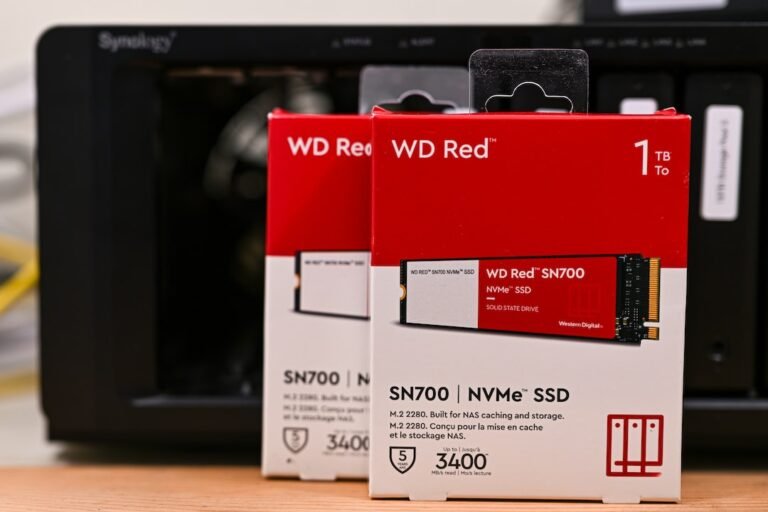Introduction
Are you enjoying the conveniences and benefits of a smart home powered by fiber internet? From controlling your lights and appliances with a voice command to monitoring your home security from your smartphone, smart home devices have transformed the way we live. However, with this incredible convenience comes the need to prioritize security. In this article, we will explore the importance of securing your smart home devices on a fiber network and provide you with valuable tips to keep your connected devices safe.
Why Secure Your Smart Home Devices?
Smart home devices, such as smart speakers, thermostats, cameras, and door locks, offer us unprecedented control and automation. They make our lives easier, more efficient, and even more enjoyable. But just as these devices provide convenience, they can also present security risks if not properly secured.
Imagine your smart lock being hacked, allowing unauthorized access to your home, or your security camera being breached, giving outsiders a glimpse into your private life. These scenarios are not pleasant to think about, but they highlight the importance of securing your smart home devices.
The Vulnerabilities of Smart Home Devices on Fiber
While fiber internet provides fast and reliable connectivity, it also introduces new vulnerabilities when it comes to smart home security. Unlike traditional copper-based connections, fiber is delivered through thin glass or plastic cables containing pulses of light rather than electrical signals.
The high bandwidth and low latency of fiber internet allow for seamless streaming, gaming, and device interconnectivity. However, these same advantages can also attract hackers who seek to exploit weak points in your network or connected devices.
Common Security Risks
Before we dive into the best practices for securing your smart home devices on a fiber network, let’s briefly discuss some common security risks you may encounter:
1. Weak or Default Passwords
Many smart home devices come with default usernames and passwords that are easily guessable or publicly available. If you fail to change these defaults, you leave your devices vulnerable to hacking attempts.
2. Outdated Firmware
Manufacturers regularly release firmware updates to address security vulnerabilities and improve functionality. Failing to update your device’s firmware leaves it exposed to known security flaws.
3. Unsecured Wi-Fi Networks
A weak or unsecured Wi-Fi network can expose your smart home devices to unauthorized access. Hackers can infiltrate your network, intercept data, or gain control over your devices.
4. Lack of Encryption
Without proper encryption, sensitive data transmitted between your smart home devices and the cloud can be intercepted and exploited.
5. Insecure Mobile Apps
Many smart home devices are controlled through mobile apps. If these apps have weak security measures or are downloaded from untrustworthy sources, they can become an entry point for attackers.
Best Practices for Securing Smart Home Devices on Fiber
Now that we understand the potential risks, let’s explore some best practices to secure your smart home devices on a fiber network:
1. Change Default Passwords
The first step in securing your smart home devices is to change the default usernames and passwords. Create strong, unique passwords for each device and avoid using common words or easily guessable information.
2. Update Firmware Regularly
Check for firmware updates for your smart home devices and apply them promptly. Manufacturers release these updates to fix security flaws and improve performance. Set up automatic updates whenever possible to stay protected.
3. Secure Your Wi-Fi Network
Protect your Wi-Fi network by using a strong, unique password. Enable Wi-Fi network encryption using WPA2 or WPA3 protocols, which provide a higher level of security than earlier standards. Consider using a separate network for your IoT devices to isolate them from your primary network.
4. Use a Firewall
Install a firewall to monitor incoming and outgoing network traffic. A firewall acts as a barrier between your devices and the internet, filtering out potential threats.
5. Segment Your Network
Segmenting your network allows you to create separate zones or VLANs (Virtual Local Area Networks) for different types of devices. By isolating your smart home devices from other devices on your network, you limit the potential attack surface.
6. Enable Two-Factor Authentication
Take advantage of two-factor authentication whenever possible. This adds an extra layer of security by requiring a second form of verification, such as a code sent to your mobile device, in addition to your password.
7. Regularly Monitor Device Activity
Keep an eye on the activity logs and notifications from your smart home devices. Be alert to any suspicious behavior or unrecognized device connections.
8. Utilize a VPN
Consider using a virtual private network (VPN) to encrypt your internet traffic and protect your devices’ data. A VPN creates a secure connection between your devices and the internet, shielding your online activities from prying eyes.
9. Disable Unused Features and Ports
Review the settings of your smart home devices and disable any features or ports that you do not need. This minimizes potential attack vectors and reduces your device’s exposure to security risks.
Conclusion
Securing your smart home devices on a fiber network is crucial in ensuring the privacy and safety of your connected devices and personal information. By following the best practices outlined above, you can mitigate security risks and enjoy the convenience of a smart home without compromising your peace of mind.
FAQ
| Question | Answer |
|---|---|
| How do I set up my home network for maximum security? | For detailed information on setting up a secure home network, check out our guide on Home Network Setup. |
| What should I do if I encounter issues with my router? | If you’re experiencing problems with your router, our comprehensive guide on Router Troubleshooting provides solutions to common issues. |
| How can I protect my smart home devices from hackers? | In addition to the best practices mentioned above, consider researching gaming routers, mesh Wi-Fi systems, and VPN router security for enhanced protection. |
| Can I integrate smart home devices with a fiber network? | Absolutely! Smart home devices can be seamlessly integrated with a fiber network. Check out our guide on Smart Home Integration for more information. |
Further Reading
| Title | Website |
|---|---|
| Fiber Network Security: Protecting Your Home from Cyber Threats | Norton – Fiber Network Security |
| Protecting Your Smart Home Devices: Tips and Strategies | McAfee – Protecting Smart Home Devices |
| Securing Connected Devices on a Fiber Network | Kaspersky – Securing Connected Devices |
| The Importance of Home Network Security | Bitdefender – Home Network Security |




